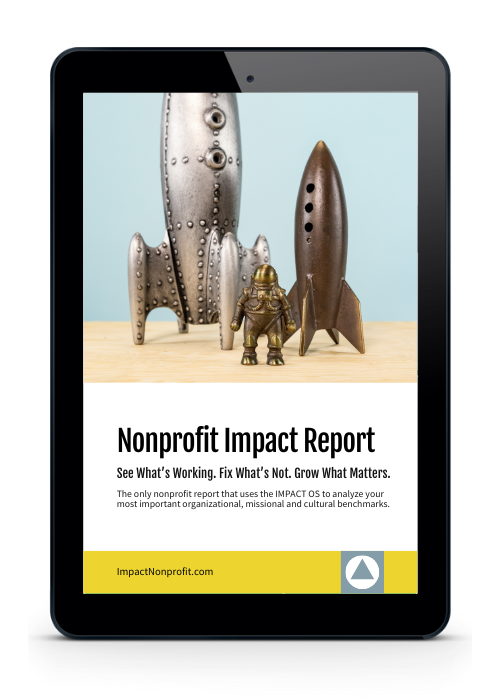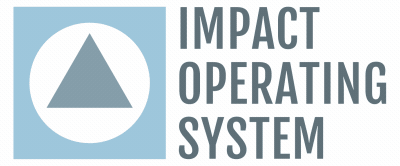Fancy Dashboard / Wrong Data
Let’s talk about one organization we worked with—a thriving community-based nonprofit with a heart of gold and a dashboard that looked like it belonged in NASA mission control.
They were tracking everything: number of meals served, kids tutored, volunteers onboarded, donations received, social media clicks… They even had heatmaps of donor behavior (which, honestly, looked like something from an FBI file).
But when we asked them: “Are you actually moving the needle on your mission?”—they paused.
Because while their data was impressive, it wasn’t insightful. They were drowning in lag measures—metrics that only revealed impact (or lack thereof) after it was too late to course correct.
They were counting the results but ignoring the causes.
If you’re only measuring how many people showed up, you’re already too late.
It’s like stepping on the scale after eating three birthday cakes and saying, “Well, I guess that didn’t work.” Lagging indicators—those numbers we tally after the fact—tell you what happened, but they don’t help you change what’s going to happen next.
And that, my friend, is the difference between good intentions and actual impact.
Here’s the Core Insight:
Lagging Metrics Tell You If You’ve Won. Leading Metrics Help You Win.
In nonprofit land, most leaders are trained—explicitly or implicitly—to focus on the obvious metrics. These are your lag measures:
-
Dollars raised
-
Number of clients served
-
Event attendance
-
Graduation rates
-
Website traffic
-
Volunteer hours logged
These are great for annual reports, donor decks, and victory laps. But they’re rearview mirror metrics. They only tell you what happened after the dust settles.
Lead measures, on the other hand, are the daily, weekly, rhythm-driven actions that drive the outcomes you care about:
-
Number of donor touchpoints per week
-
Number of strategic partner meetings booked
-
Number of staff one-on-ones
-
Percent of students attending tutoring three times a week
-
Frequency of goal check-ins across departments
They’re not flashy. You probably won’t impress your board with them—until they see your impact has doubled and your team hasn’t burned out in the process.
Leading measures are predictive. They give you a steering wheel, not just a scoreboard.
Why This Matters More in Nonprofits Than Anywhere Else
In for-profit businesses, if something isn’t working, the market will usually let you know—loudly and quickly. Sales dry up. Reviews tank. Shareholders start hyperventilating.
But in the nonprofit world? You can coast on feel-good stories and inflated numbers for years while your actual mission is stagnating. Or worse, drifting off course.
We’ve seen this again and again: passionate teams doing great work, but stuck in patterns that don’t evolve because no one’s tracking the real drivers of change. Everyone is working their tails off, but it’s like rowing a boat with spoons. Exhausting. Misdirected. Ineffective.
How the Impact OS Helps You Build Mission-Driven Metrics (That Actually Work)
When nonprofits engage with the Impact Operating System, we help them shift from “counting stuff” to “steering the ship.”
Here’s what that looks like in real life:
1. Clarify the Mission and Moonshot
A Moonshot is a time-bound slide of your vision. You’d be surprised how many orgs haven’t defined exactly what success looks like in 3–5 years. We help teams make it real, measurable, and motivating.
2. Map Lag Measures to the Big Vision
We don’t throw out your impact data—we connect it directly to your long-term outcomes. This gives you a clear scoreboard that actually matters.
3. Identify the Daily/Weekly Levers (Your Leading Indicators)
These are the things your team can do on a Tuesday that lead to measurable wins by December. They’re specific. They’re trackable. And they’re the heartbeat of your execution rhythm.
4. Create Simple Weekly Scorecards and Accountability Rhythms
Because nobody wants to manage another spreadsheet monster. We help you install light, repeatable habits that give you a 95% shot at hitting your goals (yep, research-backed).
5. Use Metrics as a Tool for Encouragement, Not Just Evaluation
We believe metrics should fuel momentum, not fear. When used well, they don’t demoralize—they energize.
If You’re Not Sure Where to Start, Start Here
Here’s the most common thing we hear from leaders:
“I know we need to track the right stuff—but I don’t know what that stuff is.”
Fair. You’re not a data scientist. You’re running a mission-driven organization with limited time, funding, and maybe two staff members who also serve as your HR, IT, and facilities department.
So here’s your first step:

👉 Get your free Nonprofit Impact Report
It’s a quick, practical tool that gives you a snapshot of where your organization is thriving and where it’s stuck. After taking our proprietary 5-minute survey, you’ll walk away with a custom report—and more importantly, a few next steps you can actually take.
No jargon. Just clarity. Because your nonprofit doesn’t need another inspirational quote. It needs a system that helps you turn vision into victory.
👉 [Get your report by taking the 5-minute survey now]

